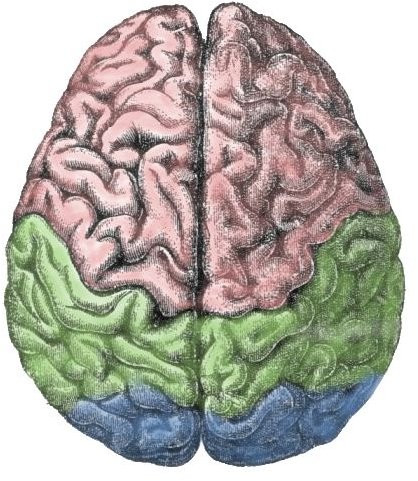Lesson Plan: Right Brain Vs. Left Brain Functions - Includes Sample Exercises
After going over the basic brain anatomy and the different function of the brain, the next lesson is explaining the difference between the left hemisphere and the right hemisphere.
Explain to the students that each hemisphere has all four lobes — frontal lobe, parietal lobe, temporal lobe and occipital lobe. Point out that the two lobes are connected by the corpus callosum. If you have a 3-D model, show students the corpus callosum.
Point out that if the corpus callosum is cut, such as with split brain surgery, the two halves of the brain act independently. Students can also refer to the study guide for further guidance.
Left Brain Function
Note to students that information from the left hemisphere crosses over and controls the right half of the body. Explain to students that one of the main left hemisphere functions is language. Remind them that two of the language centers of the brain — Broca’s area and Wernicke’s area — are both located in the left hemisphere. Point out that the left hemisphere is also responsible for other logical functions, like math.
Right Brain Function
Point out that like the left hemisphere, the right hemisphere controls the left half of the body. Explain to students that the right brain has more creative functions, like music and visual imagery. Point out that the right brain is also responsible for spatial and face recognition abilities.
Exercises
For this lesson, get students involved by having them figure out which hemisphere of the brain is their dominant side. Explain to students that while their two hemispheres are connected and are sharing information through the corpus callosum, they have one hemisphere that influences how they learn. Start by passing out a quiz. While some websites offer online versions, you can make your own. The ROTC chapter on the left brain and right brain provide some suggestions. A quick questionnaire might look like this:
1. What kind of music do you prefer?
a. Classical music
b. Popular music
2. What is more important to you?
a. Being on time
b. Having a good time
3. How to you figure things out?
a. Careful planning
b. Visualize the outcome
4. When making a decision or choice, what do you go with?
a. Consider alternatives
b. Go with the first idea
5. What do you prefer being?
a. Thoughtful
b. Active
6. What activities would you most like to do?
a. Monopoly, scrabble or chess
b. Athletics, art or music
Point out to students that if they answered mainly “a,” then they are left brained, and would benefit from visual learning; if they answered mainly “b,” then they are right brained, and would benefit from verbal learning. Encourage students to integrate their learning style (verbal or visual) into how they study.
References
- Image Credit: Cerebral Lobes by Wyglif under CC by -SA 3.0
- University of Washington: Hemispheres, http://faculty.washington.edu/chudler/split.html
- ROTC: Left-Brain/Right-Brain, http://www.au.af.mil/au/awc/awcgate/army/rotc_right-left_brain.pdf
